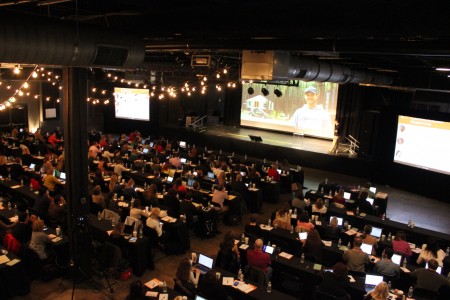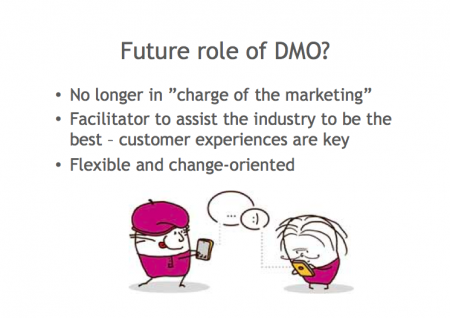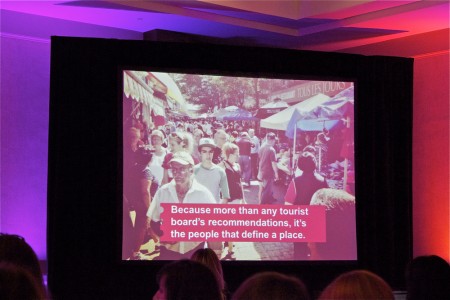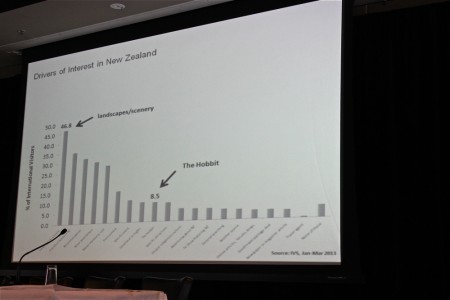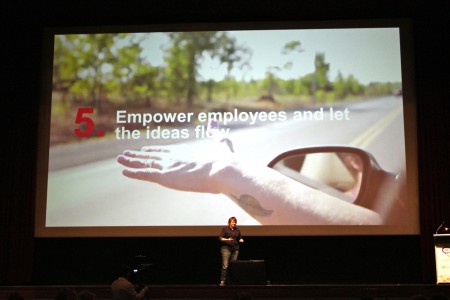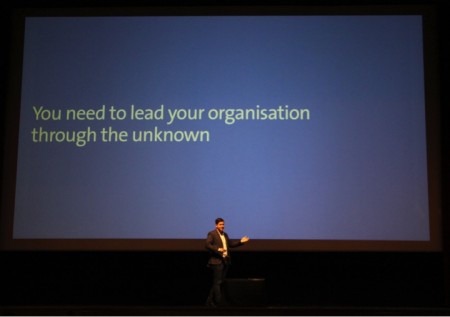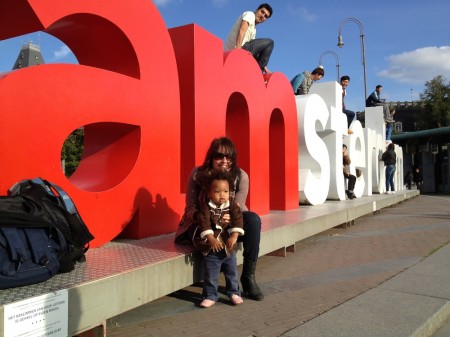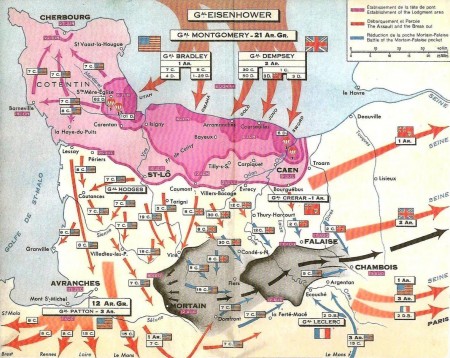Category
leadership
-
leadership, Management, Travel & Tourism
Things every new DMO CEO needs to know
I’ve seen
1) Don’t dismiss the impact stakeholders
CEOs without DMO experience often dismiss the impact of stakeholders. Strong leaders are used to making decisions independently and push things along internally. These are good and necessary qualities in a leader.
But before you start making decisions and push things along, take the time to understand the stakeholder landscape. You need to consider tourism businesses, consider politicians or administrators, upward and downward DMOs. Understand the players, their agendas and influence. Most are supportive, some have an agenda and there’s always baggage. Like it or not, about half to 90% of your job will be managing external politics so you better know what you’re in for.
One of the first things a new CEO should do it map out the stakeholder landscape. This doesn’t have to take long by the way. Your staff already knows. Conduct a stakeholder mapping exercise to document what you’re dealing with. Do this in your first week. It should take a day and there are methods to streamline this process.
It might seem like a waste of time or a distraction. But believe me you cannot ignore this. You will get burned. A tourism board is a visible entity and directly or indirectly, most DMOs manage public funds. Without your industry and political stakeholders on your side, it’s going to be a tough road ahead.
2) Review existing strategies before adding your own ideas
New CEOs bring their own ideas. That’s logical. You want to make a mark, show people that under your leadership, things will be better than before. During the interview process with the board probably shared where the challenges are and you shared some of your ideas already. Let’s get it done right?
I’ve seen many DMOs move to implement great strategies, only to see years of work blow up because a new leader didn’t take the time to understand the strategy and moved to implement their own based on their assumptions going in. They often realize later they were wrong.
Blowing a fresh wind through an organization is often a good thing, and sometimes very necessary. But before you start opening windows to let the breeze in, offer your management team the opportunity to present the current strategies and processes. Go into these meetings open minded, curious and without assumptions. Give each VP a week to put a presentation of their strategy and processes together. Ask why a lot in these meetings.
Now we’re at the end of week two and you have a pretty decent understanding of current state.
3) Build consultation into everything you do
Hopefully you’ve done #1 and #2. There are probably opportunities to make things better. There always are. When making these changes, strategically and tactical, the most overlooked and ignored aspect of destination marketing is stakeholder consultation. Because it can be time consuming, frustrating and lead to bad decisions or mediocre programs and campaigns. Yes, all true. But not when you do it right.
Here’s the little secret I’ve known for about a decade. Having people involved in the process is more than half the battle. Give people a voice and listen. You might be surprised what you’ll learn and you’ll build allies who will be there when you need them.
4) Create a culture of innovation
Taking the the first two first two pieces of advice to heart can easily create another big risk a DMO leader faces. Management by consensus, risk aversion and inertia.
That’s where real leadership part comes in. Leadership for a DMO CEO means understanding the full scope of your destination and stakeholders, take it all in and develop a shared vision for the destination and rally people behind that vision.
5) Think twice before going retail
6) Stand behind your staff
THE CHALLENGE: A DMO has an incredible lineup of stakeholders. Most are supportive, some have an agenda and there’s always baggage. You need to consider tourism businesses. You need to consider politicians and administrators. You need to consider DMO’s who manage a destination within yours, or manage a destination yours is part of. You cannot underestimate this. You cannot ignore this. A tourism board is a visible entity. It’s part of your destination’s identify. And directly or indirectly, most DMOs manage public funds. That means the press is always ready to find a juicy controversy.
The mistake DMO leaders often make it to play it safe. This manifests itself
THE SOLUTION: Your stakeholders need to buy into your strategies. That means you need to have an inclusive and collaborative approach. But it’s a fine balance. Too little and there’s no buy-in, too much and things get bogged down. Sometimes you need to push, sometimes you need to take the foot off the gas. Strong leadership is crucial.
As a leader, our #1 priority should be your staff. Make sure they have the right skills and motivation. Create a culture of trust and learning from mistakes.
4)
Often
4)
-
leadership
We can adapt and change if we want to/forced to
We have been talking about the need for change in our industry, and society, for a long time. And there was always an excuse to keep the status quo, change slowly, or only in the margins. When the impact of the pandemic hit in March 2020, change wasn’t only possible, it came fast and effective.
Business processes, operations, and even business models were reinvented almost overnight. The following weeks and months these new ideas and concepts were improved upon to a point where we’ve almost fully adapted to the current reality we live in. Some governments all of sudden were able to finance the necessary restrictions on businesses and people’s livelihood. A vaccine was developed at warp speed, faster than ever before.
That doesn’t mean there has been no impact. Many people in our industry have lost their jobs or businesses they took years to built. For many, 2021 will be another very though year. But some of the early and dire predictions of the impact and length of the pandemic haven’t come to fruition.
It demonstrates that when the collective will exists, or the necessity because of a crisis, rapid action is possible.
-
leadership, Management, Marketing, Travel & Tourism
The business case of attending a #SoMeT conference overseas
I have the privilege of attending our SoMeT conferences on three different continents. The learning is incredible. Both from the speaker content, and also from speaking to the attendees. It helps me a lot in my work.
A question I get asked a lot is if there are differences between DMOs in different parts of the world, their challenges and their approaches to solving them. The answer is: yes and no. The challenges are very similar but the approaches differ. I think the regional differences are partly cultural but also influenced by the “neighbour effect.” People pay close attention to the DMO next door, and then this is reflected in their own strategies and tactics.
For this reason, it’s interesting to attend a SoMeT conference on a different continent. You’ll see a different spotlight shone on familiar challenges. It can be very eye opening, and will inspire you to try new ideas and approaches. I know it does for me. Not to mention the fact you’ll also make new connections with your international peers.
It might be a tough sell to your boss or board. The optics and psychological barrier of an intercontinental flight (and costs) to go to a conference when there are options closer by is challenging. But when you put it in terms of value, the additional cost are minimal compared to the value it delivers. We’re talking a few hundred dollars.
So keep an eye on our conferences around the world and what they have to offer. #SoMeT15EU will be held in Amsterdam.
-
leadership, Marketing, Travel & Tourism
Picking the right conference to learn the most and make the best connections
01.28.14 | Permalink | 4 Comments
My past (red) and upcoming (green) speaking gigsI’ve spoken at dozens of conferences and attended dozens more. I’ve been to really good ones, I’ve been to bad ones and I’ve been to some where it was all about the money. We (at Think!) also run our SoMeT conference in the US, Australia and Europe.
Here are my guidelines for picking the right conference:
- Find your peers: the best part of a conference is often the networking. Find conferences where you can connect or reconnect. I remember that from my DMO days. SoMeT, for example, offers more of a community and the conference also serves as a yearly reunion of friends. So ask around, see what your peers will be attending.
- No sales pitches: too many conferences sell presentations, and you’ll end up listening to sales pitches. Avoid conferences where (too many) speakers are also sponsors.
- Look for DMO (or non-vendor) speakers: These people have nothing to sell to you. And case studies are typically the way to learn. The nice thing about our industry is that people share a lot of learning with each other.
- Find presenters you like, don’t look at the title of the presentation: Conference organizers will often make up titles without the presenters’ knowledge. Look for speakers you know and respect. Research the keynote speaker’s blog and see what they’ve posted on Slideshare.
- Avoid too many panels: Panels are hard to pull off. You need a good moderator and engaging panelists. It’s rare when it happens. People are too nice and polite. When I’m on a panel, I make a point of trying to stir things up for that very reason.
Based on the guidelines above, I also design my presentations and avoid any direct sales pitches for Think! I share what I know and what I’ve learned – which is just what I like to see from a presenter. I always, always worry about giving people enough value, not the amount of business cards I collect.
That’s also how we run our SoMeT conferences. We make sure there are plenty of networking opportunities, we don’t sell speaker slots, we invite tons of leading DMOs from around the world to speak and use panels sporadically.
If I had one conference I could attend a year, I would attend a digital tourism conference that follow my rules above.
If I could attend two, I would pick one outside the tourism industry on a specialized topic. So not SXSW for example. I would pick a conference specific to word-of-mouth marketing, social media, UX design, service design, gamification, content marketing, SEO/SEM, etc.
Hope to see you out there soon.
-
leadership, Management, Marketing, Travel & Tourism
The state of the DMO in 2013
(this post was first published on Tnooz)
I attended over a dozen tourism conferences this year on four continents, including our own #SoMeT conferences. Looking back at the pictures I took and the presentations I’ve downloaded, there’s a common thread and it tells a compelling story about the future of the DMO.
Change is needed
William Price – South African Tourism (#SoMeT13AU)At #SoMeT13AU in Australia, William didn’t mind shaking things up with some provocative quotes including this one. We need to stop doing stuff that doesn’t work and start doing things that do work, and South African Tourism is blazing trails.
What I’ve realized this past year is that we’ve passed the phase where people are skeptical or in denial. We have entered the phase where we are starting to ‘sort out‘ the model, as Clay Shirky calls it. The only things standing in the way are fear, lack of the correct skills and/or not knowing where to start.
The winners aren’t the ones with the biggest budget
Jacques Massardo – Ogilvy Cape Town (#ETAS13)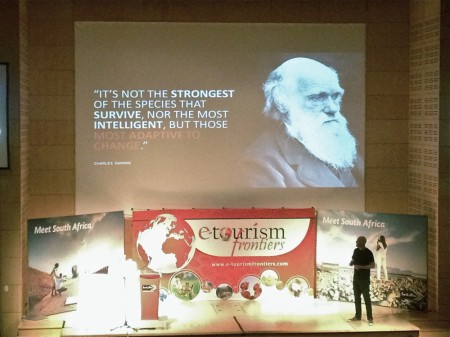
(Please someone correct me if I got the presenter of this slide wrong. I took it at E-tourism Frontiers in Cape Town and forgot who it belongs to.)
I really like this quote because it’s very relevant to what’s going on right now. I see it all around me. The DMOs with the biggest budgets aren’t necessarily the ones who are going to win. They can hide the fact they’re falling behind through big media buys, but there will be a tipping point soon where those who didn’t adapt will have to deal with massive change in a short period of time. And that’s going to hurt. Those who have transitioned and adapted strategically over a period of time will reap the rewards.
By the way, the tipping point is when boards and/or politicians move away from judging activities based on how things look or make them feel, and instead look at the numbers that matter. I’ve started to see early indicators of this already.
The winners are the ones that think outside the box
Heidi Sørvig – Visit Sørlandet (#ENTER2013)At #ENTER2013 in Innsbruck, Heidi Sørvig from Visit Sørlandet gave a very to the point presentation about how running a DMO in the 21st century really doesn’t have to be that complicated if you’re not afraid to lead, challenge the status quo and make changes.
I’ve been a fan of Heidi’s strategy. It’s very innovative and practical. Her primary KPI is repeat visitation. Because if people come back, it means they like the experience. It also means they will probably recommend the destination to others. She also understands that it’s more efficient to train industry operators about how to manage and market a tourism business than pouring that money into traditional advertising. She has created a program for operators that’s probably the most extensive and sophisticated of any I’ve seen. And all on a small budget.
The winners approach change strategically
Emmanuelle Legault – Tourisme Montréal (#SoMeT13AU)Tourisme Montréal (a Think! client) has been one of the most innovative DMOs in the ‘big city’ category for years. With leaders like Emmanuelle, TM is not afraid to challenge the status quo, take risks and experiment. I admire her courage because she wants to do what’s right. At #SoMeT13AU, Emmanuelle shared how they’ve been transitioning from a Destination Marketing Organization to a Destination Management Organization over the last few years and how they have dealt with some of the obstacles.
The winners understand to let go of control
Frédérick Ranger – Tourisme Montréal (#SoMeT13US)Accepting that a DMO doesn’t create a brand, but consumers do was one of the common threads at #SoMeT13US. This is a major shift for many marketers who are used to keeping a brand under tight control. At Tourisme Montréal, one of their guiding principles is to let go. Fred gave a passionate presentation in which he demonstrated how Tourisme Montréal is implementing programs and campaigns that deliver on this principle.
The winners understand the consumer
Donna Moritz – Social Media Strategist at Socially Sorted (#SoMeT13AU)Donna shared this wise quote from Apu Gupta. What it means is that the transaction will happen as a result of an emotional relationship, and one that grows over a long period of time. It sits at the essence of most modern marketing philosophies including social media, content marketing and permission marketing. In the tourism industry, however, we often seem to be chasing the next “head in bed” or “bum in seat”. Tactics are focussed on the short-term, but we need to take a long-term view to build reputation and loyalty over time.
The winners measure the right things
Andrew Pozniak – Kuoni (#ENTER2013)Kuoni is a very large luxury travel brand. In many ways they are very traditional, but I’ve seen a few presentations from them now and the way they go about things will set them up perfectly for the future…if they get their online strategy right.
Kuoni places a lot of value in NPS (Nett Promotor Score) and they measure this at different stages of the customer journey. I like this slide because it’s almost identical to one I use. NPS is the best quantitive measure for the overall destination experience. The science behind NPS shows a correlation between NPS score, loyalty, referral and corporate growth. It’s also easy to do.
The winners take charge of designing the destination experience
Marc Stickdorn – Think! HangoutMarc is one of the real thought leaders for service design. He co-authored a book called This is Service Design Thinking and now runs My Service Fellow and Smaply. I’ve known him for a few years and he was kind enough to do a presentation about service design for the Think! team over Google Hangout. Service Design is a methodology, process and a set of tools that will deliver on this objective, just like Information Architecture, Usability and Interaction Design for websites.
Now that we need to build a brand on the ground, through stories people tell, a DMO needs to design the end-to-end destination experience. By using the dollars typically spent on advertising to work on designing the complete destination experience, people will have a better destination experience. As a result, your NPS score, the stories people tell, repeat visitation and referrals will go up.
The winners build their brand through the experience on the ground
Gregg Sauter – Saskatchewan Roughriders (#HostSK2013)The Saskatchewan Roughriders (a Think! client) have a strong brand and very loyal following. Gregg explained at Host Saskatchewan that they way they’ve built their brand is primarily around experience. The result is incredible: 2/3rds of all merchandise sales in the Canadian Football League are for his team.
This slide maps some of the touch-points with their customers before the game even starts, from the parking attendant to the stadium host. Mapping the customer journey like this is part of the service design process. It’s the starting point to examine, benchmark and redesign critical touch points where required.
The winners constantly experiment, measure and adjust
Jori Kirk, Cypress Hills Eco-Adventures Ltd (#HostSK2013)Jori operates an adventure tourism business in Saskatchewan, Canada. I loved his presentation during which he described the keys to his success. As a small business owner, he keeps things simple and focused. He does this by cleverly using technology, offering value while embodying the right corporate values and engaging staff (mostly guides) to empower them and make the experience awesome for the customer. The result is a runaway success.
Jori understands the story his customers what to be part of, how to deliver it and and how to get the story told. If he misses the mark, he will adjust elements to fix the plot of the story.
The winners add real value to the consumer
Jay Baer – author of Youtility: Why Smart Marketing Is About Help not Hype (#SoMeT13US)Jay Baer‘s message is all about creating value for the consumer. You can’t compete for attention anymore and the best way to gain trust is by adding true value to people’s life. He wrote a good book about it.
It’s not hard to figure out how this applies to travel. Great customer service is key and visitor centres have traditionally facilitated a way for DMOs to deliver it. But customer service has moved outside of those four walls and a roof. Customer service now happens online, on Twitter, Facebook and message boards in all stages of the customer journey.
The winners will engage their network
Sarah “Sos” Mattsson – Tourism and Events Queensland (#SoMeT13AU)While presenting their online video content strategy for Tourism and Events Queensland at #SoMeT13AU, Sos explained how they have identified key groups of video content producers and described how they fit into their strategy.
It’s important to recognize who the main groups of storytellers are and creating strategies that will help get the best stories out there. It’s also a great way to scale customer service. For example, TripAdvisor destination experts are doing customer service work for free.
The winners market to niches that matter
Catherine Bates, General Manager Brand and International PR, Tourism New Zealand (#TEEC)Catherine presented Tourism New Zealand’s three-year strategy to leverage the Hobbit movies as a niche marketing opportunity. Even though it’s very traditional (and I wish I could make it social at the core), it’s a perfect example of marketing to a niche audience. For example, Catherine shared the fact that while only 1% of visitors to the city list the Hobbit as a primary reason for a visit, but it still represents $33M.
Focussing on a niche creates big opportunities because you can narrow your focus. Engaging a niche audience via their passions is much easier because it’s very relevant to them. And when you do it right, they will respond by sharing and influencing friends.
The winners empower staff
Kate Duffy – Canadian Tourism Commission (#SoMeT13AU)Kate described the Canadian Tourism Commission’s social media journey. When a consumer is social, a brand needs to be social as well, and that will ultimately lead to a social business.
A social business will be the end game – we call it a Level 5 DMO. Organizationally, it means letting of the control internally. The rate of change is only going to increase and as the role of the DMO changes and marketing becomes real-time, it’s really important to reduce bureaucracy and empower staff. It might sound scary but you’ll be surprised to what level people will rise to when they feel a sense of responsibility and empowerment.
The winners enable change from within
Jesse Desjardins – Tourism AustraliaAt #SoMeT13AU Jesse from Tourism Australia shared some of the strategies and approaches to managing the largest DMO Facebook page in the world. It’s very practical and another demonstration that it doesn’t have to be complicated. Just like Kate, Jessie also promoted the fact that it is the responsibility of the people within the organization to champion changes.
For DMO leaders, my advice is to listen to the teams that are running your digital and social platforms. There is an incredible amount of talent out there and you need to use it. I’ve seen good people walk away out of frustration and that hurts all of us. Support your staff and take some risks. Let them create a plan. Park your skepticism, and invest in the future. Learn. And share it with your industry so they understand your new role better. Start the journey so you can manage it over time.
For DMO staff, be an advocate. Find opportunities to create proof of concepts and promote them internally. Help your leaders and your industry understand what is the most efficient and effective way of destination management. Things won’t change by waiting for somebody up top to do the right thing, be pro-active and promote successes.
Conclusion
This year was an exciting year. Many DMOs have done incredible things and I’ve learned so much. I’ve seen many more great presentations I didn’t include here. The future of the DMO is bright, as long as we let go of sacred cows, let go of fear, create a plan to move forward, learn and adjust as we go.
Where to start? Benchmark your current activities, set clear objectives and create a strategy. At a minimum, create a plan for next year to start moving in the right direction.
-
Internet, leadership, Management, Marketing, Travel & Tourism
Building the social destination brand
09.16.13 | Permalink | 3 CommentsThe Iamsterdam sign is an invitation to take a picture and share it
Building a destination brand is done primarily through the stories people tell each other. And social media has only accelerated that process. Getting more of the right stories told is a massive opportunity but how do you go about it?
Here’s a 5 step strategy for this.
1) MOTIVATE
A destination is the stage where memories are made and stories are created. People ignore or forget the ordinary and remember and share what’s remarkable. These remarkable experiences often turn into the primary motivators for others to visit a place. In order to get more stories told in social media, you need to make sure things are worth talking about. The IAmsterdam sign in Amsterdam (above) is always surrounded by tourists taking photos. Not only is it a cool piece of art, it’s also the perfect way to tell your (Facebook/Instagram/etc) friends where you are.
For a tourism business it’s important to build in moments that motivate people to share in the overall experience. For a DMO it’s important to increase the number of things worth talking about overall. Educating your operators about this principle is the low hanging fruit. Every tourism business should have at least one reason for people to talk about them. Often it’s just a matter of making a few tweaks to get people talking. Getting involved in city planning might be more difficult but can pay-off with massive dividend.
2) ENABLE
When there’s something worth sharing, people need to be able to share it right away. For international visitors, data roaming is often an obstacle and the availability of free Wifi will increase social sharing. It’s not just the responsibility of operators. Viewpoints, beaches, mountaintops, buildings of great architecture typically don’t have a tourism operator associated and Wifi is nowhere to be found. This is where the DMO can step in. Taiwan gets it, they offer free nationwide Wifi to tourists.
But there are other obstacles. Some businesses don’t allow pictures to be taken while others don’t have the proper lighting to make photos or to make them look good. It’s a missed opportunity, you have to give people the opportunity to share, even if it’s in a limited capacity.
3) ENCOURAGE
People will share an experience when they find it remarkable. For people on the fence it’s easy to pull them over the line by encouraging them. This can be achieved by things from signage to incentives. Disney identifies places in their theme parks with photo opp signs. Some DMO’s are starting to do the same. We worked with a ski resort last year to do put signage up to encourage sharing combined with and a contest for the best photos shared.
At an operator level it’s often a matter of reminding and asking people. Remind people on checkout to give a review on Tripadvisor for example, or follow up with an email. Others take it a step further. When I was in Wollongong, Australia, the Skydiving operator filmed and photographed the experience and gave me a link where I could download the images with an easy way to share them through my social channels.
4) CURATE
When people share stories, it’s important to find them. Social Media is like a world-wide, real-time, always-on focus group. You’re crazy if you don’t take advantage of it. You need to find them the relevant stories about your destination, good or bad.
A lot of other opportunities and insights can be gained from the massive amount of stories out there. Brands like KLM, Gatorade, Nascar and many others have dedicated social media team that monitor social media for a variety of purposes. These programs separates signal from noise by curating the content and processing it for specific purposes. Some data might need to actioned on while other data serves specific research purposes.
5a) ACTION – AMPLIFY
Some of the best stories told in social media are worth incorporating in your own marketing. People share stories with great emotional appeal and the quality, creativity and authenticity often rivals what a DMO and their agencies produce. Use the best content you find to enhance your own activities of amplify them through your own channels.
Visit Britain started sourcing the majority of the photos on its website from Flickr back in 2009. Tourism Australia only posts photos on Facebook submitted to them by their community. Many DMOs find the best photos on Instagram and reshare them while Pinterest is probably the best example of content curation with the best photos people find online.
But why stop there? You might want to give some quality content even more exposure. You can use some SEM budget to amplify a great blog post from an influencer for example. Some amplification can go even further. The Canadian Tourism Commission turned some of the best YouTube videos they found about Canada into TV commercials and recently crowd-sourced another. It doesn’t matter who created the story or where it’s located. What matters is that it moves a person down the funnel.
5b) ACTION – CUSTOMER SERVICE
Social Media will identify customer service challenges and opportunities. DMOs are already in the customer service business but have often limited themselves to a box called a visitor centre. Step outside the box and start assisting visitors in real time by responding to people in social media. Customer service challenges can be resolved quickly before they turn into negative stories.
In the meantime, the overall visitor experience will benefit from assisting travellers through social media. KLM will respond to any social media question within an hour. Most tourism operators don’t have the luxury to set-up these kind of services but the DMO can fulfill that role on behalf of their industry.
5c) ACTION – MITIGATE
Listening can also help to find information about a destination on the internet that’s incorrect (yes, there is incorrect information on the interwebs). This information could be viewed by many potential visitors who could make the wrong decision as a result. Often it’s just a matter of contacting the owner of the source to correct the error. Start by asking nicely!
If something slips through the cracks and negative stories start to emerge it’s important to mitigate these as soon as possible. There are also specific events that could cause a social media crisis. Think about a natural disaster, a call for a boycott or an influencer will a horrible experience. Being prepared and having a social media response plan in place will streamline communication before things escalate far and wide and cause considerable damage. Don’t rely on old corporate communication strategies, they don’t apply to social media. Just ask United.
5d) ACTION – LEARN
People will take pictures of things they find remarkable. And when they put themselves in the photo it’s even more remarkable. The things people find remarkable might surprise you. Insights gained from a curation program can provide you with all kinds of new marketing ideas or even identify potential target audiences. You will also identify the challenges visitors might have with the destination experience overall, sometimes in places you might not expect. Addressing these challenges in a fundamental way through service design will allow you to create a more favourable perception of the destination overall. You can measure these things over time, segment them by audience, experience and other parameters. It’s a massive opportunity and part of the future of destination marketing.
-
leadership, Management
Strategy vs. Tactics
03.07.13 | Permalink | 3 Comments“Strategy without tactics is the slowest route to victory. Tactics without strategy is the noise before defeat.”
― Sun Tzu, The Art of WarOne major topic of discussion at Think! is whether a client who ask for strategy really wants a strategy or wants a list of tactics.
Here’s a guide to strategy and tactics.
STRATEGY VS. TACTICS
A strategy is a long term approach to achieve a big goal. It spans a longer period of time and describes an approach to achieve that goal. It’s often complex and muli-layered. A strategy allows you to set priorities and focus your resources. It should also define what success looks like.
Tactics are smaller, short term actions to deliver on the strategy. Tactics need to be evaluated and adjusted constantly based on what is learned along the way. But a strategy needs time and typically stays in place for a longer time unless the goal or other macro variables changes.
THE DANGER OF TACTICS WITHOUT STRATEGY
Some people are focussed on doing. Strategy to them looks nebulous and intangible. It doesn’t contain specific tasks. But random tactics without a strategy leads short term actions with unpredictable long term results. It’s like driving a car around without knowing how to reach your destination. And everybody on your team is driving their cars around in all directions hoping to eventually get there.
That’s why every tactic needs to deliver on a strategy. “Running ads to grow a Facebook page” is a tactic. But why are we doing it? What purpose does it serve? Why is it more important than anything else? And once we have more fans then what? And how does Facebook fit in with everything else?
WHAT TO ASK YOURSELF (AND US)
- Do you need idea for things to do for the next few months based on your existing strategy? You need a tactical plan.
- Do you an approach to reach a long term goal with starting points to go about it. You need a strategy with tactical starting points.
-
Internet, leadership, Management, Marketing, Travel & Tourism
Top 5 Wrong Assumptions in Destination Marketing
01.09.12 | Permalink | 69 Comments1) Building a destination brand through advertising

You can’t. A destination brand is:
- The sum of experiences of a traveler during a trip (but not all experiences are equal)
- The sum of all stories somebody has hears about a destination (but not all sources are equally credible)
Ten years ago, your TV ads, brochures and other forms of marketing collateral contributed a sizeable portion of the stories people heard about a destination. Not anymore. People telling other people, aided by new forms of communication (including social media but not exclusively) is now dominant and has make brand advertising hopelessly inefficient.
Ensuring your destination has quality experiences, getting your operators up-to-speed in modern marketing and actively managing your destination’s reputation in social media, especially in niche communities is how you build and manage a destination brand.
2) People still like paper guides/call centers/newspapers/magazines/consumer shows/travel agents/etc.
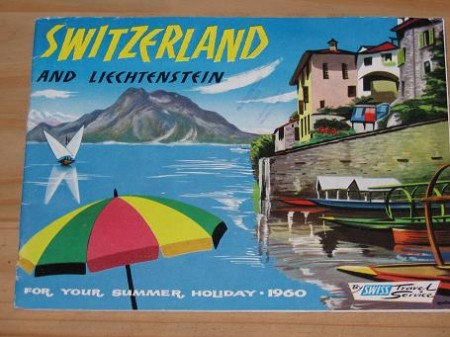
Yes they do. But is it the most effective way for you to get your stories told?
I get it. It used to be so succesfull. You’re still proud of the results from 1998. And it’s really hard to stop doing something. Staff will be effected and change management in an organization is often messy.
But lets get real. Most people have moved on. The biggest bang for your buck lays elsewhere and we both know it.
Stop making excuses, take close and hard look at your activities (budget + people) and stop doing the things that have become inefficient or ineffective.
3) Operating a reservation system will generate extra revenue

It probably won’t. And if it does, it’s going to take a lot of hard work against stiff competition.
I know it’s tempting. There’s the potential for extra revenue and your hotels are putting on the pressure to fill their rooms now instead of focussing on the long term. It’s also something tangible to measure and the technology is so easy now. And cheap.
But consumers just don’t think of a DMO website as a place to transact. They have a gazillion options to book. And usually at a much better rate than the DMO will ever be able to offer.
Making a booking system produce results is hard work.
When you choose to operate your own reservation system where your accommodation operators give you specific rates and inventory, you also need people to manage this process. That means chasing operators for rates and inventory, sending out commission cheques, chasing operators for money and dealing with customer service issues.
You’ll also need people who stay on top of your website and the conversion funnels. What advertising drives bookings? Where do people drop off in the funnel? What do you need to tweak to increase your conversion rate?
I’m not saying offering bookings is a bad idea, especially not if you’re a city DMO. An aggregator like JackRabbit is a good option add booking capabilities to your website without the operational overhead for example.
An even better option is if you have a way to differentiate yourself from online travel agents by creating value added packages online travel agents can’t offer and target these to niche audiences.
4) Processes and organizational structures from the 90’s still work today

They don’t. The workplace of the 90’s was very much a leftover from the industrial age.
Let’s see what has changed over the last 15 years. Technology and the internet has turned travel planning and booking up-side-down. Everybody knows this, but most DMO’s just added some form of online unit or department in their structure and left it at that.
And there is more! Technology has also completely changed the way people work with new productivity and collaboration tools. Technology is becoming ubiquitous. Cloud computing allows you to outsource pretty much everything and access your data from anywhere. People stay connected through mobile devices and take work home on their laptops while Social Media has completely blurred the line between professional and private life.
The industrial age is over. All of the above has completely changed the way new generations think about the workplace. Corporate structures, hours of work, roles and responsibilities, staff retention all has to be re-thought. Just read Don Tapscott and Charlene Li.
5) The one stop agency of record is still effective

It usually isn’t. More and more DMO’s are challenged with their agencies of record based on what I hear at conferences.
From my perspective, the reason why most traditional agencies are still having a hard time with digital and are often completely clueless about social is because their culture and business model is based on traditional advertising principles.
In traditional advertising, you only have one shot at getting it right. You buy the media, produce the communication pieces and let it ride. An outcome of that is getting the creative right the first time is really important. As a result, right brain creatives run traditional agencies.
In digital marketing, the creative is still important but you should spent more time after launch by looking at the data, and keep iterating the tactics to keep perfecting it. Data and real-time analysis is part of a digital agencies culture. That’s a fundamental difference.
In social media, on top of digital marketing principles, you also need to humanize the message and open up your brand for consumer input. That’s often just too much to ask.
The result is that in most cases, DMO’s need to go best-of-breed and hire multiple, specialized agencies and contractors. With the new collaboration tools, it’s much easier to manage these days. We experience this with the increased number of RFPs out there specific to social media. Maybe a new ‘agency of record’ model will emerge at some point but that will take some time.
A one-stop-shop is definitely easier to manage on an executive level. Only one RFP to run, it simplifies managing the relationship (only one person to have lunch with or yell at) and streamlines back-office accounting processes. If you still want to go one-stop-shop, look for a digital agency that also does traditional instead of a traditional agency that also does digital.
Note: I understand that especially the first and last point on this list can be perceived as a pitch for my company. The reality is that this is exactly why I joined Think! in the first place. To help DMOs innovate and break through some of the conventional wisdom out there.
-
leadership, Marketing, social media, Travel & Tourism
I’ve seen the future of travel media
08.30.11 | Permalink | 13 Comments
Steve Keenan, online travel editor from the London Sunday Times summarizes Valencia’s unique approach to a media/blogging famValencia Leads
A few weeks ago the Valencia Tourism Region hosted a blog trip (#blogtripF1) and it could very well be the new standard for DMOs to model their traditional media trips or media fams after. I was fortunate enough to be invited on the trip.
Valencia Tourism invited a mix of traditional journalist, travel bloggers, social media travel, web technology and web design professionals. These people of all ages, with diverse skill-sets and interests where hosted on a four day event centred around Valencia and the Formula One Grand Prix.
It included all the hallmarks of a traditional media trip. Visits to the best restaurants, the top sights, attractions and accommodations. The trip included private guides and behind the scenes tours, all well organized as you can expect from any respectable DMO.
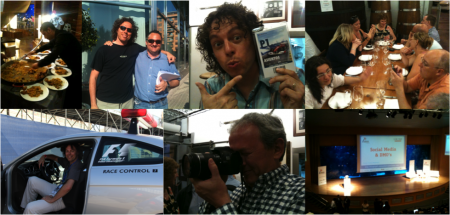
Making the media trip social
Valencia Tourism innovated the traditional trip by creating a place for these professionals to collaborate, discuss, debate and most of all develop new relationships. Social Media professionals are social by definition and unlike traditional journalists who are more driven by exclusivity, bloggers understand their individual success is strengthened by the success of their relationships and their network.Taking advantage of educational opportunities
The place to kick-off the discussion was at a conference where attendees presented a topic related to their area of expertise (videos of presentations here). The event was attended by many local, national DMO’s and operators. A great way to get Tourism Valencia’s stakeholders access to the knowledge in the group.Fostering the creation of networks
Over the next few days we got to know each other very well. There was enough time and opportunity to do so. We discussed and debated all topics digital travel professionals are interested in. And everything was tweeted in real time of course, creating a surge of Valencia exposure in real time, across many people’s personal and professional networks.
Creating remarkable experiences
Remarkable experiences turn into social objects, shared in social media. These are the things worth blogging, tweeting and Facebooking about. There were plenty in Valencia. Walking on top of a shark tank, eating the best Paella, incredibly photogenic modern architecture, random bars, more great food and of course the F1 race.Remarkable experiences was also the subject of my presentation, summarized in this interview
Build in surprises
Exclusive access, or including things money can’t buy will generate even more conversations. The trip offered personalized surprises such as a visit to the F1 paddock, a ride down the track in the safety car and even a drive in a converted 3-seater Formula One car for some.Results
The tally so far? By the last count I’ve heard a while back a few dozen blog posts have been written, 61 YouTube videos created, 363 people tweeted 1,558 tweets reaching over 2 million people all around the world while articles in traditional media are being written.But the real value is not just the immediate exposure but the fact that Valencia sits at the centre of a strong network of travel bloggers and tourism professionals including their expended networks. Valencia will always be top op mind when I connect with any of the new friends I’ve made.
Promoting by focussing on building networks and putting yourself in the middle of it. That’s the future. Valencia has re-invented itself over the last years with new tourism attractions, infrastructure and mega-events. They’re doing the same with destination marketing.
Congratulations Joantxo and Arantxa, you’re setting the new standard for travel media.

Valencia’s City of Arts and Sciences – Photo by Sherry Ott -
Internet, leadership, Marketing
Lessons for marketers from Googles search team
Every year Google launches over 500 improvements to its search algorithm. There’s a lot to learn from this video for modern day marketers.
Focus on your end user
It all starts with a focus on the user. “Google has made a huge investment in understanding what works for users (3:25)” because “when you align Google’s interests with user interests, good things happen (3:17)“.Aligning business objectives with user objectives should sit at the core of any online marketer principles. Without it, you’re sure to fail.
Keep improving what you have
Google is obsessed with improving their search product; “we get excited when we hit on an idea what helps a lot of users (3:37)“. Continuous improvements sits at the heart of their culture.Traditional marketers spend almost all their efforts before they launch because it’s hard to change things after. Online marketers need to spend the majority of their effort post launch. You receive instant results and it’s easy to change things.
This includes websites, social media, search, email marketing, etc.
Base decisions on data, not opinion
In too many organization, decisions are made based on opinions. Usually a senior person doesn’t like something or receives pressure from a stakeholder with an agenda and want something changed. Or a real problem is being dismissed because it’s invisible (a technology upgrade for example). Rarely does anybody actually look at the data in detail.At Google, “a problem identified and hypothesis created (0:35)” and subjected to “rigorous scientific testing (0:53)“, using a trained panel called raters (0:59), live experiments (1:14) and analyzed by a search analyst (1:14). The decission to make the change is then held in a “launch decision meeting (1:47) by the leadership, based on data with an unbiased view”.
Implementing this at your organization
These are some key elements of Google’s success. But even when you’re not Google with a large team, here’s what even the smallest organization can do:
- Always put the user first. Not your manager, not the CEO, not the creative genius at your agency, not that difficult stakeholder but always the user. Fight for your users and make it a non-negotiated principle.
- Foster a culture of rapid iteration. Change is good and needs to be constant. To streamline the process, remove unnecessary approvals and sign-offs. Trust your team and don’t micromanage. Educate, don’t police and empower staff. With empowerment and responsibility comes a powerful sense of ownership.
- Implement a system to collect all feedback; from consumers, from staff, from stakeholders and from your online marketing team looking at the data. Break big problems into smaller pieces and prioritize all feedback based on your objectives.
- Look at the data and look for evidence. Run tests. Is this a real problem or an unfounded opinion? (bonus: you now have ammunition the next time the same “issue” comes up)
- Create hypothesis and test them best you can. Through usability, prototyping or A/B testing. Might sound complicated but it doesn’t have to be. A/B testing in SEM is super easy and with Google Website Optimizer, so are web pages.
- Bring back the data and make a decision.
The most successful online marketing programs I’ve seen aren’t the organizations with the most money. They’re the organizations that run their programs based on the above.
